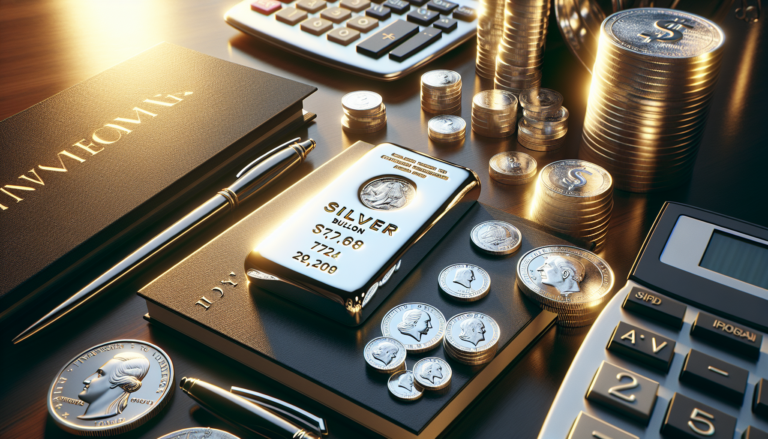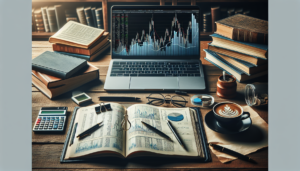Investing in silver has become an increasingly popular choice for those looking to diversify their investment portfolios and protect their wealth against economic uncertainties. Silver, a precious metal with a long history of value, offers several advantages as an investment asset. This comprehensive guide will walk you through the basics of investing in silver, including the various investment options available, strategies to consider, and practical tips for getting started.
Introduction to Silver Investment
Silver has been used as a store of value and a medium of exchange for centuries. Today, it continues to attract investors due to its unique properties and potential for long-term growth. As a tangible asset, silver provides a sense of security and stability in times of economic volatility.
Investing in silver can take various forms, ranging from physical bullion and coins to exchange-traded funds (ETFs) and mining stocks. Each investment vehicle has its own characteristics, advantages, and risks, allowing investors to choose the option that best aligns with their goals and risk tolerance.
Why Invest in Silver?
One of the primary reasons to invest in silver is its ability to serve as a hedge against inflation. As the value of paper currencies declines over time due to inflationary pressures, silver tends to maintain its purchasing power. This makes it an attractive option for investors seeking to protect their wealth from the erosive effects of inflation.
Moreover, silver offers portfolio diversification benefits. By including silver in your investment mix, you can potentially reduce overall portfolio risk. Silver often performs differently than traditional assets like stocks and bonds, providing a valuable counterbalance during market downturns.
Another compelling reason to invest in silver is its status as a safe-haven asset. During times of economic uncertainty or geopolitical turmoil, investors often flock to precious metals like silver as a means of preserving capital. This increased demand can drive up the price of silver, potentially generating returns for investors.
Understanding Market Demand for Silver
When considering investing in silver, it’s essential to understand the factors that influence its market demand. Silver has significant industrial applications, particularly in the technology and renewable energy sectors. As these industries continue to grow, the demand for silver is expected to rise accordingly.
In addition to industrial demand, silver is also sought after for its use in jewelry, silverware, and other decorative items. As global wealth increases, particularly in emerging economies, the demand for silver in these areas is likely to expand.
Staying informed about market trends and economic indicators can help investors make informed decisions about their silver investments. Factors such as interest rates, inflation expectations, and geopolitical events can all impact the price of silver and should be closely monitored.
Types of Silver Investments
Investors have several options when it comes to investing in silver. Each type of investment has its own unique characteristics, benefits, and drawbacks. Understanding these differences is crucial for making an informed decision that aligns with your investment objectives and risk tolerance.
Physical Silver: Bullion and Coins
One of the most direct ways to invest in silver is through physical bullion. Silver bullion refers to silver that is at least 99.9% pure and is available in the form of bars or rounds. These products are typically sold by weight, with common sizes ranging from 1 ounce to 100 ounces.
Another popular option for physical silver investment is silver coins. Government mints around the world produce silver coins specifically for investment purposes. Examples include the American Eagle and Maple Leaf coins, which are recognized for their purity and liquidity in the market.
When investing in physical silver, it’s important to consider factors such as storage and security. Investors must ensure that their silver is properly stored and protected from theft or damage. Some choose to store their silver at home, while others opt for professional storage facilities or safety deposit boxes.
Silver ETFs
Silver exchange-traded funds (ETFs) offer investors a convenient way to gain exposure to silver without the need for physical ownership. These funds are traded on stock exchanges and track the price of silver, providing investors with the ability to buy and sell shares easily.
ETFs can be backed by physical silver holdings or invest in silver-related securities such as mining stocks. They offer the benefits of liquidity, diversification, and professional management, making them an attractive option for investors who prefer a more hands-off approach.
When considering silver ETFs, it’s important to evaluate factors such as the fund’s expense ratio, tracking error, and the reputation of the fund manager. Additionally, investors should be aware that ETFs may have counterparty risk and may not provide the same level of control as physical silver ownership.
Silver Mining Stocks
Investing in silver mining stocks is another way to gain exposure to the silver market. By purchasing shares in companies that are engaged in the exploration, extraction, and production of silver, investors can potentially benefit from the growth and profitability of these companies.
Silver mining stocks offer the potential for leveraged returns, as the performance of these companies is often tied to the price of silver. However, they also carry additional risks such as operational challenges, geopolitical factors, and fluctuations in production costs.
When evaluating silver mining stocks, investors should consider factors such as the company’s financial health, management quality, production capacity, and exploration potential. It’s also important to diversify across multiple companies to mitigate the risk of individual company failures.
Silver Futures and Options Contracts
For more advanced investors, silver futures and options contracts provide a way to speculate on the price of silver or hedge existing positions. Futures contracts are agreements to buy or sell a specific amount of silver at a predetermined price on a future date. Options contracts give the holder the right, but not the obligation, to buy or sell silver at a specific price within a certain timeframe.
These derivative instruments offer the potential for high returns but also carry significant risks. Futures and options trading requires a thorough understanding of the markets and careful risk management. Investors should have a solid grasp of the mechanics of these contracts and the potential for substantial losses before engaging in this type of investment.
Investment Strategies for Silver
When investing in silver, it’s important to develop a clear strategy that aligns with your investment goals and risk tolerance. Different investors may have varying objectives, such as long-term wealth preservation, short-term speculative gains, or portfolio diversification.
Long-term vs. Short-term Investment
One key consideration is whether to approach silver as a long-term or short-term investment. Long-term investors typically view silver as a store of value and aim to hold their investments for several years or even decades. They may focus on accumulating physical silver or investing in silver ETFs with a buy-and-hold strategy.
Short-term investors, on the other hand, may seek to capitalize on price fluctuations in the silver market. They may employ more active trading strategies, such as buying and selling silver futures or options contracts, or trading silver mining stocks based on market sentiment and technical analysis.
Assessing Risk Tolerance
Another important factor to consider is your individual risk tolerance. Investing in silver, like any other investment, carries inherent risks. The price of silver can be volatile and subject to various market forces, geopolitical events, and economic conditions.
Before investing in silver, assess your comfort level with potential price fluctuations and the possibility of losses. Consider how much of your overall portfolio you are willing to allocate to silver and ensure that it aligns with your risk profile and investment objectives.
It’s also essential to diversify your silver investments across different vehicles and strategies. By spreading your investments across physical silver, ETFs, mining stocks, and potentially futures or options, you can potentially mitigate the impact of any single investment underperforming.
Practical Considerations for Silver Investment
When investing in silver, there are several practical considerations to keep in mind. These factors can impact the ease, cost, and security of your silver investments.
Storage and Security
If you choose to invest in physical silver, storage and security become important considerations. You’ll need to decide whether to store your silver at home or in a secure storage facility. Home storage requires investing in a safe or vault and implementing appropriate security measures to protect your assets.
Professional storage options, such as bullion vaults or safety deposit boxes, offer enhanced security but come with additional costs. When selecting a storage provider, consider factors such as reputation, insurance coverage, and accessibility to your silver when needed.
Costs and Fees
Investing in silver involves various costs and fees that can impact your overall returns. When purchasing physical silver, you may encounter premiums above the spot price, which reflect the costs of minting, distribution, and dealer markups. These premiums can vary depending on the type of silver product and the dealer.
ETFs and mutual funds that invest in silver also charge management fees, which are deducted from the fund’s assets. These fees can eat into your returns over time, so it’s important to compare the expense ratios of different funds and consider their impact on your investment performance.
In the case of collectible silver coins or numismatic items, premiums can be significantly higher due to their rarity and historical value. Investors should be cautious when considering these items and ensure that they have a thorough understanding of the collectible market and the potential risks involved.
How to Buy Silver
Once you’ve decided to invest in silver, the next step is to determine how and where to make your purchases. There are several options available, each with its own advantages and considerations.
Buying Silver Online
One convenient option is to buy silver online through reputable dealers or bullion exchanges. Online platforms offer a wide selection of silver products, competitive pricing, and the ability to easily compare options from multiple dealers.
When buying silver online, it’s crucial to research the reputation and credibility of the dealer. Look for established companies with a track record of satisfied customers and secure transaction processes. Be cautious of deals that seem too good to be true, as they may be scams or involve counterfeit products.
Local Dealers and Pawn Shops
Another option is to purchase silver from local dealers or pawn shops in your area. Local dealers often offer the opportunity to view and inspect the silver products in person before making a purchase. They can also provide guidance and education on different silver investment options.
When buying from local dealers or pawn shops, be prepared to negotiate prices and compare offers from multiple sources. It’s important to establish a relationship with a trusted dealer who can provide ongoing support and liquidity for your silver investments.
Consulting Investment Professionals
For those new to silver investing or seeking personalized guidance, consulting with investment professionals can be beneficial. Financial advisors, precious metals specialists, or investment firms can provide insights into market trends, investment strategies, and risk management techniques.
When selecting an investment professional, consider their experience, qualifications, and track record in the silver market. Look for advisors who take the time to understand your individual goals and risk tolerance and provide transparent and unbiased advice.
Keep in mind that investment professionals may charge fees for their services, so it’s important to understand their compensation structure and ensure that it aligns with your interests.
Conclusion
Investing in silver can be a valuable addition to your investment portfolio, offering the potential for wealth preservation, diversification, and long-term growth. By understanding the different investment options, developing a clear strategy, and considering practical factors such as storage and costs, you can make informed decisions about how to invest in silver.
As with any investment, it’s important to conduct thorough research, assess your risk tolerance, and seek professional guidance when necessary. By approaching silver investing with a disciplined and educated mindset, you can potentially navigate the market effectively and work towards achieving your financial goals.
Remember, investing in silver is a personal decision that should align with your overall investment strategy and objectives. Take the time to evaluate your options, understand the risks and rewards, and make decisions that support your long-term financial well-being.
See also:






